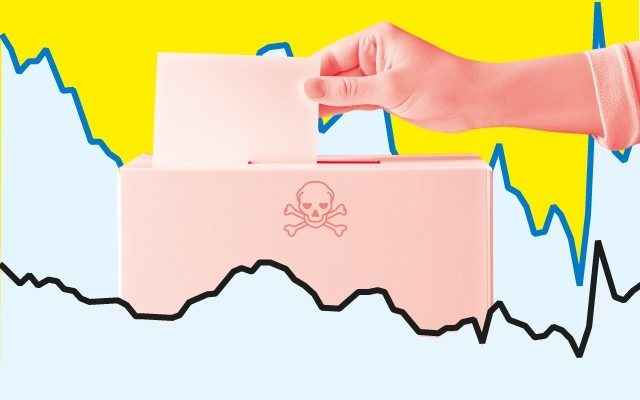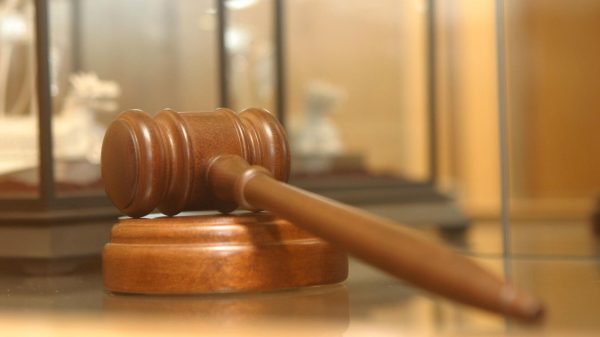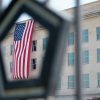
Any mortgage borrower can tell you about the shock of soaring interest rates over the past two years.
< p> After 15 years of cheap money that encouraged households to take on more debt, homeowners were left exposed when the Bank of England began increasing borrowing costs.
It's a painful wake-up call for mortgage borrowers whose cheap fixed-rate deals are about to be renewed at a time when households are already forced to cut spending, extend the terms of their loans and look for new jobs or promotions to cover costs. cost.
No debtor in the country is larger than the British government, so its problems, and therefore the problems of the wider population, are of a proportionately different scale.
More than just a decade of rock-bottom interest rates has led ministers to believe that money is almost free somewhere and may well remain so forever.
This has been used to justify decisions to borrow huge sums of money. Debt has risen from just over a third of GDP on the eve of the credit crunch to almost 100% now, or £2.6 trillion in value terms.
The magic of low interest rates initially meant that interest payments barely budged. .
In 2009–10, around £5.50 of every £100 collected by the government went towards interest on debt. This amount has fallen below £3 during the pandemic, despite mounting debts.
It is now £10, with a tenth of Treasury receipts absorbed by interest payments.
The government is set to spend around £100 billion on debt interest payments this year. The Office for Budget Responsibility expects a brief reprieve as inflation eases before resuming growth later in the decade. Britain is unique in tying a quarter of its debt to the cost of living.
There is irony in this situation, says Robert Colville, author of the 2019 Conservative manifesto and director of the Center for Policy Studies (CPS), a think tank he co-founded Margaret Thatcher.
«Rishi Sunak, when he was Chancellor, was very passionate about this issue,» he says.
«He kept saying: 'We can't keep piling up debt, if interest rates rise we'll be in complete ass.» »
This is a long-standing problem for conservatives. Nicky Morgan, a former finance minister and then education secretary, recalls many similar warnings from chancellors in recent years.
“It was always talked about,” she says. «I remember Sajid Javid talking about it in the Cabinet Office: 'If we have this debt, we have to think that at some point interest rates might rise and it will become more expensive.'
'But, Of course, at the same time there is always a reason to spend money.»
Philip Hammond, who was chancellor from 2016 to 2019, says Britain was «misguided» in thinking debt could rise inexorably without any… or consequences.
“Imagine running your household on the basis that you took out a credit card with a £500 debt and ran it up to £5,000, but no one ever says, 'What should we do about it?' this'?» he says.
«I don't want to sound like some Victorian moralist, but I worry that the public has lost sight of some basic facts: you can't spend more than you earn. And the greatest disaster for any person, be it an individual or an entire country, it is what you end up borrowing to pay the interest on your loans.
“We are in a precarious position.”
The demands on spending money are huge, especially when it comes to the NHS, pensions and bottom line.
But the annual cost of debt is 100 billion sterling is inevitable and will force the Tories and Labor to make difficult choices when planning their election campaigns.
When setting the March Budget, the Office for Budget Responsibility (OBR) decided the Chancellor had just £6.5 billion to meet his key target of reducing debt in five years. Given the scale of the national debt, this means that very small changes in borrowing costs can have dramatic consequences for spending options or demands for tax increases.
As for Labour's plans, it was forced to cut its flagship green investment proposal of £28 billion a year. This is a huge sum, but it is dwarfed by a rise in debt interest costs of almost £60 billion between 2019 and 2022.
Although unattractive to voters, tax rises and spending cuts are the most obvious options for Jeremy Hunt and Rachel Reeves as they struggle with difficult financial situations.
For now, higher taxes do most of the heavy lifting for the chancellor. Tax receipts will rise to almost 38% of GDP, the largest tax burden on record since 1948.
In monetary terms, government current receipts could rise to more than £1.2 trillion a year . 2027–2028, which is one third higher than the level of 2021–2022
Much of this revenue comes from income tax and national insurance, as the chancellor froze the thresholds at which they are charged at a time of high inflation. With so much money pouring in as a result of the freeze, Hunt may have the opportunity to raise the thresholds again.
But Colville suspects the flood of additional tax revenue will prove too valuable given the interest bills, despite the pain. for workers and enterprises.
“They probably don’t feel able to stop doing it, even though they would really like to, because they just need so much extra money,” he says Hammond argues that cutting overall spending is unlikely: “With an aging population, it is very difficult to see how this can be done in practice.”
A government source says keeping inflation at bay plus 1 percent is something Hunt can do. will go “to contain the size of the state.”
Theoretically, Labor may have more room to manoeuvre. If it comes to power after 14 years in opposition, the new government will not feel bound by the decisions of its predecessors and will be able to claim a mandate for a new approach.
However, Keir Starmer's party has so far stuck to the government's fiscal plans out of caution and fear of spooking voters or financial markets with any talk of increased borrowing and spending.
This time it is Labour's party. has vowed to water down tax hikes, focusing on a few largely symbolic measures, such as a VAT raid on private schools, rather than anything that could raise money on the scale of the Conservatives' freeze on income tax thresholds.
< p>Reeves set new borrowing rules to show restraint.
“I set out Labor's budget rules, which first and foremost prevent us from borrowing to finance everyday spending,” she says.
p>
“Secondly, we will reduce the share of debt as a share of GDP, and secondly, third — subject to the first rules — we will invest in growth potential, recognizing that lack of growth is the main driver of the high taxes and increasing debt that we have seen from this government.»
The shadow chancellor will not go into detail: “We don’t yet know what picture we will inherit. And before the election we have at least two more financial reports, and possibly three. Therefore, I will not give numbers, but we will clarify this closer to the elections,” she says.
But the promised priority is growth.
” We have not developed the economy over the past 13 years, and as a result, we had to borrow more money and pay taxes to be able to finance government services,” she says.
Revitalizing the government and boosting economic growth is difficult without room for fiscal manoeuvre.
Stephen Timms, Chancellor of the Exchequer for most of Labour's years, says the Blair government initially did not feel able to make major financial decisions, so he he had to find a policy that would avoid significant costs but would also show voters that things had changed.
«Tony Blair has managed to convince people that this is different from what it was before,» he says .
< p>“The drastic change in personnel will make real the changes that people would want if they voted for them. Different personalities, different ways of talking about things.”
Accelerating growth is definitely vital. But this is easier said than done.
Hammond praises the Chancellor's efforts to get more people into work.
“Jeremy Hunt is absolutely right to focus on getting as many people into work as possible. We must stop subsidizing people who sit at home and do nothing if they can work at all,” he says.
“No one in the UK who is physically able to do a job should be allowed to receive any kind of work.” or some kind of government support for refusing this.”
The government's plans also include boosting public sector productivity to try to overcome a major headwind to growth.
John Glen, the long-serving finance minister who was this week appointed treasurer-general and cabinet minister, is leading the expansion working group use of digital technology and artificial intelligence in the public sector.
Given the lack of funds for spending, Hunt mainly wants to rely on the private sector to do the heavy lifting.
An extension to full spending to encourage business investment is expected to be announced in the autumn statement next week. while the Chancellor is also looking at ways to encourage pension funds to move more of their money out of bonds and into British businesses.
Labor also supported the idea. Liam Byrne, who served as chief secretary to the Treasury in Gordon Brown's government, proposes consolidating Britain's fragmented pensions industry into fewer super funds to better channel large investment flows.
There is a risk, however, Colville says.
Meanwhile, Labour's plan to continue borrowing for public investment is also a cause for concern.
Meanwhile, Labour's plan to continue borrowing for public investment is also a cause for concern. p>
Additional debt is still additional debt, says Morgan.
“There are those who argue that it depends on what the debt is for — if it is for infrastructure investment, for example, do you look at it in terms of another way of using debt to cover day-to-day expenses?” she says.
“But the fact is that the debt still exists — it is still accumulating, there is still interest on it.”
The situation could get even worse. Following the financial crisis and then the pandemic, the OBR calculated the trajectory of public debt if the economy was hit with another costly surprise once a decade.
If that happens, public debt is forecast to rise to an almost absurd 360% to 435% of GDP in 50 years.
All of this adds to concerns that it will be impossible to stimulate economic growth with anything like the amount needed to reduce the debt burden without paying taxes. growth and spending cuts.
CPS' Colville warns that «we need growth of 2.9% a year just to pay for the current welfare state, and we haven't even come close.»
p>


























































Свежие комментарии